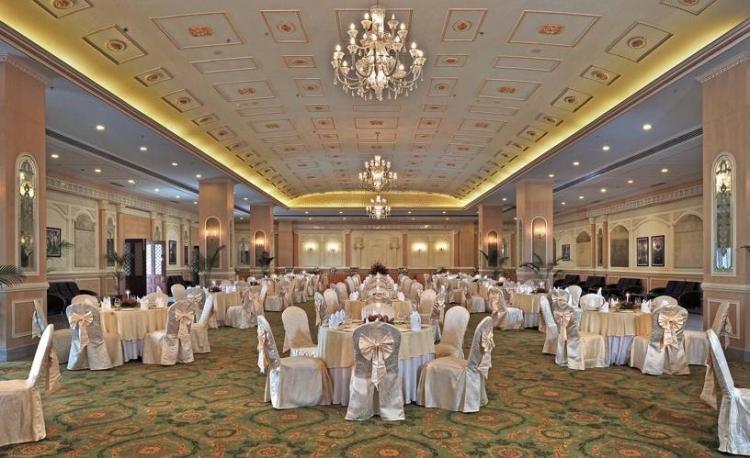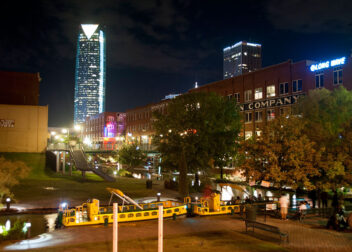Sheesh Mahal
The Splendid Beauty within Agra Fort – The Sheesh Mahal
Sheesh Mahal is a palace located in Jaipur, Rajasthan, India. It was built in 1778 during the reign of Sawai Pratap Singh and is known for its extensive use of mirrors and glasswork. The palace was used as a residence for the royal family and is now a popular tourist attraction.
The walls and ceilings of the palace are adorned with tiny mirrors, creating a glittering and shimmering effect. The central hall of the palace is the main attraction and is covered with mirrors and glasswork. The architecture of the Sheesh Mahal is a blend of Hindu and Muslim styles, with a central dome surrounded by smaller domes and minarets.
Sheesh Mahal is a part of the City Palace Complex in Jaipur and is a must-visit destination for anyone interested in the history and architecture of India. Visitors can admire the intricate carvings and paintings on the walls and ceilings, explore the palace, and learn about its history. The palace is also a popular tourist attraction and is visited by thousands of visitors each year.
Sheesh Mahal Jaipur How to reach
As a language model AI, I don’t have access to real-time information but the following is the common way to reach Sheesh Mahal Jaipur:
By Air: The nearest airport to Jaipur is the Jaipur International Airport, which is well-connected to major cities in India and abroad.
By Train: Jaipur has its own railway station, which is well-connected to major cities in India.
By Road: Jaipur is well-connected by road and is located on National Highway 8. Buses, taxis and private cars are available for hire.
Once you reach Jaipur, you can take a local taxi or auto-rickshaw to reach Sheesh Mahal, which is located in the city center.
History and architecture
Sheesh Mahal, also known as the “Palace of Mirrors”, is a palace located in the City Palace Complex in Jaipur, India. The palace was built during the reign of Sawai Pratap Singh in 1778 and was used as a residence for the royal family.
The palace is famous for its intricate and intricate carvings and the extensive use of mirrors and glasswork. The walls and ceiling of the palace are adorned with tiny mirrors, which reflect light and create a glittering and shimmering effect. The main attraction of the palace is the central hall, which is a large room covered with mirrors and glasswork. The walls and ceilings of the hall are adorned with paintings and intricate carvings.
The architecture of the Sheesh Mahal is a blend of Hindu and Muslim styles. The palace has a central dome surrounded by smaller domes and minarets. The walls and ceilings of the palace are adorned with intricate carvings and paintings, which depict Hindu gods and goddesses, animals, and flowers.
Overall, Sheesh Mahal is a remarkable example of the rich cultural heritage of India and the intricate craftsmanship of the local artisans. It is a must-visit destination for anyone interested in the history and architecture of India.
Facts
- Sheesh Mahal was built in 1778 during the reign of Sawai Pratap Singh.
- The palace is known for its extensive use of mirrors and glasswork.
- The walls and ceilings of the palace are adorned with tiny mirrors, creating a glittering and shimmering effect.
- The central hall of the palace is the main attraction and is covered with mirrors and glasswork.
- The architecture of the Sheesh Mahal is a blend of Hindu and Muslim styles.
- The palace has a central dome surrounded by smaller domes and minarets.
- The walls and ceilings of the palace are adorned with intricate carvings and paintings.
- Sheesh Mahal is a part of the City Palace Complex in Jaipur.
- The palace was used as a residence for the royal family.
- Sheesh Mahal is now a popular tourist attraction and a must-visit destination for anyone interested in the history and architecture of India.
Things to do
- Explore the Palace of Mirrors: Take a tour of the palace and admire the intricate carvings and paintings on the walls and ceilings. The glittering and shimmering effect created by the mirrors is truly mesmerizing.
- Learn about the history of Sheesh Mahal: Discover the history of the palace and the story behind its construction. Learn about the architecture and the cultural influences that went into its design.
- Take photos: Sheesh Mahal is a photographer’s paradise. Capture the beauty and intricate details of the palace in your camera.
- Visit the City Palace Complex: Sheesh Mahal is just one of the many palaces located in the City Palace Complex. Take a tour of the complex and learn about the rich cultural heritage of Jaipur.
- Shop for souvenirs: Jaipur is famous for its traditional crafts and textiles. Shop for souvenirs and take a piece of Jaipur back with you.
- Try local food: Jaipur is famous for its traditional street food. Try the famous “Dal-Baati Churma” and other local delicacies.
- Visit nearby attractions: Jaipur is home to many other historical sites and attractions. Visit the Amber Fort, Hawa Mahal, and Jantar Mantar, among others.
Best time to visit
The best time to visit Sheesh Mahal in Jaipur is from October to March, during the winter months. During this time, the weather is pleasant and cool, making it the perfect time for sightseeing.
The summer months from April to June can be extremely hot, with temperatures reaching up to 40°C, making it difficult to explore the city and its attractions. The monsoon season from July to September is also not ideal for visiting, as the city experiences heavy rains and flooding.
Overall, the winter months are the best time to visit Sheesh Mahal and Jaipur, as the weather is pleasant and the crowds are not as heavy, allowing visitors to explore the city at a leisurely pace.
Nearby attractions
- Amber Fort: This magnificent fort is located just a few kilometers from Jaipur and is a must-visit destination. It is a blend of Hindu and Muslim architectural styles and offers stunning views of the city.
- Hawa Mahal: This iconic palace, also known as the “Palace of the Winds”, is located in the heart of Jaipur. It was built for the royal women to observe the city from its many windows and balconies.
- Jantar Mantar: This ancient astronomical observatory is one of the largest and best-preserved in the world. It is a unique attraction and is a must-visit for anyone interested in science and astronomy.
- City Palace Complex: The complex is home to many palaces and museums, including the Chandra Mahal, the Mubarak Mahal, and the Diwan-i-Khas. It offers a glimpse into the rich cultural heritage of Jaipur and is a must-visit destination.
- Albert Hall Museum: This museum is located in the Ram Niwas Bagh and is home to a large collection of artifacts and exhibits from the Rajasthan region. It is a must-visit destination for anyone interested in history and culture.
- Jaigarh Fort: This fort is located on a hill overlooking Jaipur and offers stunning views of the city. It is a well-preserved fort and offers a glimpse into the military and architectural history of the region.



